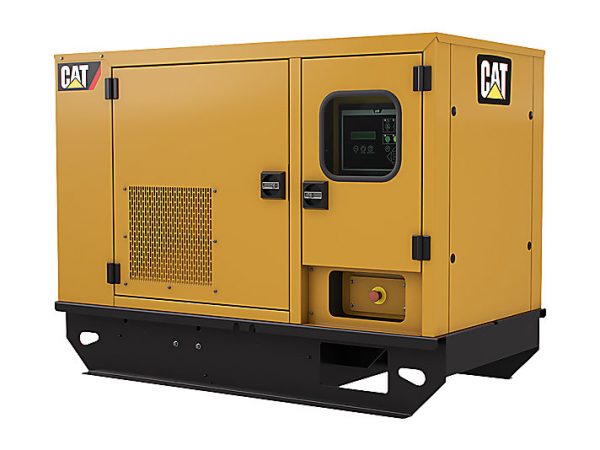There are already some huge maps out there, Just Cause 2 and 3 both have maps at around 1000km2, and those games are beloved by their players. But if the next Cyberpunk game was announced with Night City now being the size of an actual large metropolis, say like New York, would you say that’s too big? What determines what “too big” is?
It’s too big when the developers are unable to fill it with enough interesting things to do and discover to keep my attention. But there’s no absolute size I’d automatically consider too big, as it also depends on things like traversal. If you ride through the map on a mech going 400km/h, it can be much larger and more spread out than if I have to traverse the entire map on foot.
That’s definitely a key point. Absolutely loved the first Forest game, the map was just the right size for what content it had, then the sequel has a map 4x the size that is just completely empty for 90% of it. They did make some improvements over early access but it was still mostly a waste
To summarize this thread: It’s not the size of the map, it’s how you use it
Hey it’s a totally average sized map! Some would even say it’s too much!
It has pools in it!
It’s not about the size, but more about density of meaningful content. I like Elden Ring because every nook and cranny feels worth exploring. It’s the game that dares to hide optional areas behind optional areas, all with their own unique enemies and bosses.
On the other hand, taking Elden Ring as an example again, the mini dungeons were too repetitive. The first time visiting a catacomb is exciting, but it turns into quite a chore after the third time and onwards. You’ve already seen it all. Same thing with the dragon battles.
I think Elden Ring overall strikes a good balance with amount of surprises per square meter.
There was one maze type catacomb with teleporting chests that was like a breathe of fresh air.
I think it’s really interesting to compare a game like elden ring to something else like BOTW
My first time playing through elden ring I had an amazing time, and thoroughly enjoyed the open world experience. I made sure to explore every crack in every wall, not necessarily for the rewards, but rather for the exploration itself because that exploration felt magnificent
However, I’ve now played through elden ring four times over the years, and I quickly realised I was only playing for the bosses, with the open world merely being a hindrance to my journey. This problem quickly compounds, as the first few hours of a save is usually you running around buck naked looking for your weapons, smithing stones, flasks, etc.
This is opposed to something like dark souls 3, where your journey to get the build you want usually means you can a 30 second detour from your main path.
Compare this with BOTW, which I’ve also played through a fair few times, and it’s easy to understand why these games are different. Unlike ER, I honestly thought of the bosses as more like hindrances to getting the powers, which would help me traverse the open world. To me, that traversal was the most enjoyable thing about the game
This might just be a tinfoil hat theory, but I think this is because of the difference in rewards between the two. Unlike ER, which most rewards being clearly defined and memorable, in BOTW the vast majority of rewards are either
a) spirit orbs from shrines
or
b) korok seeds
While the shrines themselves can be memorised, I’d say it’s practically impossible to remember the location of all these things, mainly because there’s no point - there are so many, you’ll run into your fair share anyway. There are exceptions of course, with weapons and shields and the like, but for the most part it holds true
Anyway, this went on way too long lol
It’s not a question of the world being too big or too small, it’s the density of interesting things. A giant world with very little worth doing doesn’t accomplish much, but similarly a small world where you’re absolutely tripping over things that feel like you shouldn’t skip them will also feel claustrophobic.
Additionally, the traversal system can help a LOT here. Even a world that has a lot of wide open dead space can feel good if the process of crossing that space is itself fun. Dune: Awakening comes to mind here, where there are large spans of open desert that you need to cross, but ripping across the dunes on my sandbike was so much fun I didn’t mind the dead ground.
Do you remember LoZ Wind Waker? Maybe it’s the nostalgia goggles, but ripping through the open water just felt good. I don’t even think it was particularly mechanically fun. Maybe it was just the music.
The music and the bright colors in that cel shading style were great. They also did a really good job with the seagulls and the barrels and the silhouettes in the distance as you were sailing. Maybe it was just the contrast with all of the ‘dark’ games at the time. It was a gigantic mood swing from majora’s mask. The music really helped sell it.
I think wind waker is good example of how to handle ‘open world’ without letting on that you’re controlling the experience. I don’t think any of the official ‘next steps’ ever had you sailing more than three squares away. The teleport was right when the world ‘opened up’ to you doing whatever you felt like, and the easily grasped concept of one square=one island with some interaction made sure there was no loss of focus on the developers or players. Obviously the main islands had more to do than the ones with just a platform/reef, but it worked.
It can never be too big, but it’s a problem if it’s a big city with nothing to do (Cyberpunk).
I say density, though Elite Dangerous puts a spin on how large the map should be.
In Elite Dangerous, most of the galaxy is unexplored. The Bubble (human inhabited area) is fully explored, which steadily dwindles as you go to about 1k ly outside the Bubble. Out there, you’re basically on your own.
When you explore and map unexplored areas, you actually get some money depending on the quality of your finds. If you find some Earth-like planets, for instance, you can get a lot of money from exploring. There is also an inexhaustible supply of systems to explore, so there’s no need to worry about running out.
I spent 3 months in the void, didn’t see another player for the entire run.
More than bigger, I want more accessible interior spaces. Like cyberpunk, but you can go into other people’s living spaces
Yes, this. Even if some of it is procedurally generated, how fun would it be to go in ANY door in cp77??
First mod I put in fallout puts mor interiors into city buildings. Frankly I’d be happy of 70% were recycled but 100% were accessible.
Everything except the story bits would be procedurally generated. And it would probably get pretty boring having like three interior types repeated over and over.
There is no open world that is too big. They can only be too small.
However, the quality of an open world is not predicated on the size of the open world, but rather what is actually in it.
And this doesn’t mean that open worlds must be drowning in content, as the quality of the content itself also matters, and certain worlds that are large and empty can still be interesting due to its traversal being good, or the sandbox nature of a large empty world.
Some of the worst examples of open worlds are the kind that are just filled with isolated little fetch quests; busywork that’s all marked on the map with no element of organic exploration. Or the kinds of open worlds where nothing actually happens “organically” without the player starting it.
The best kinds of open worlds are the ones that emphasise exploration and/or have background systems governing the world in some way (i.e. factions that interact with each other without the explicit involvement of the player).
I feel Daggerfall would be too big without the quick travel systems, but thats the only game Ive felt dread about slow travelling to distant locations
I think that all comes down to how the travel, visual appeal, and POIs are handled. As well as a personal interest in the gameplay loop. The following are my general opinions on a few games for why I think they do or do not work.
Daggerfall would be way too big, because the POIs are few and far between and there is no visual interest between, but it worked because it had fast travel.
Each of the successive TES games had more visual interest to them and wel spaced POIs and I spent a lot of time walking on first playthroughs without fast traveling anywhere.
Similarly No Man’s Sky could seem too big at first blush, but if you like the gameplay loop it’s infinitely fascinating. For anyone wanting to move further in it’s also helpful that there are gates to help make large jumps, without them being a requirement to enjoy things.
Cyberpunk 2077 was very visually interesting and had a ton of POIs and was fun to traverse on foot and in a vehicle. I thought the size was fantastic on my first two playthroughs. The third time the badlands areas got a little frustrating though.
Stalker and Stalker 2, are very fun to traverse by foot for me despite being very large. They are visually very interesting, especially 2. There are plenty of things you can stumble on and explore. In fact on my first playthrough of Stalker 2, I didn’t even realize it had a fast travel option for over 60 hours because I didn’t feel the need to look for one to use. Loved the huge size of those.
WoW was horribly oversized, as are many MMOs. WoW was(and imo still is despite many upgrades since I played, just not a fan of toony looking games) completely uninteresting visually, had no “on the way” POIs and had no motivation to look around. Long travel was a chore on top of a burdensome gameplay loop. I hated WoWs size. It felt big just because it would take people longer to play. I can’t express how fucking boring it was to me. And exploring had zero reward. I remember wandering into the water and swimming for like 30 minites to get behind some massive tree or something (all I remember was it was a brown gradient that’s how dull the visuals were) and I get behind it and there was fuckall. That was the last time I played I think. More brown gradient and uninteresting light blue water gradient stretched off into a foggy white gradient. Fucking hated WoW but especially its size. MMOs like that are the equivalent of having a rail shooter that’s more train ride simulator than shooter. It works for other people, I just couldn’t stand it.
Outward is a fantastic game but it’s world feels a little too big sometimes. I don’t really enjoy wandering it that much even though I enjoyed the game on the whole. Just felt I got to the point of sprinting from one objective to the next because I was tired of traversing the map.
So it’s really game dependant imo. If they nail some key aspects, size doesn’t seem to matter.
Nothing much new to say, just reiteration. A big or huge or gigantic map is fine, so long as it’s populated by meaningful content.
Really wish Forspoken had been more populated. It’s a huge world, and combat/abilty wise it’s a great pure-mage action game, which I really really loved about it, that’s not a very common thing. But my god, the world is so empty despite being so big, and most side objectives are just collectothons. There’s some more difficult endgame content, but no real reason to grind up for it.
Having played Minecraft and No Man’s Sky, I can say that no world is necessarily too big, because infinite is not too big.
This is it.
GTA 5 was boring when it came to exploring, much of it was pretty empty unless there was a mission. Elder Scrolls Arena was just random generated repeated stuff - miles of it. Assassin’s Creed Odyssey was a lot of copy and paste.
I am looking forward to Light No Fire and have played countless hours of Minecraft and Star Citizen.
“Too big” doesn’t exist as long as I am enjoying myself.
It’s about how much time is spent between points of interest. The size doesn’t matter.
WoW is objectively huge, but they made it feel tiny by putting fast travel options everywhere. I would guess that any two points in the world are no more than 5m from each other if routed perfectly.
I want there to exist one MMO where you “live” in a city, and traveling to another city is actually so inconvenient that you only do it if you have to. Not because I want to make the trek, but because I want there to be a world just large enough that any one person has usually seen only ~1%, but the playerbase in entirety has seen >50%. I don’t know if any such game exists.
traveling to another city is actually so inconvenient that you only do it if you have to
They don’t work. Vanguard did it way back when, with their three continent world. Each one had enough content to get from lvl 1 to lvl 50, the max, and your starting race determined your starting location. It could take up to an hour to get to friends. Even on the same continent, with a mount (before they added flying mounts), it could take a half hour of running to cross the map… and players complained so vociferously that they were forced to add fast travel options.
I don’t think that means it didn’t work, I think that just means it’s not for everyone. I’m a firm believer that, “given the opportunity, players will optimize the fun out of a game”. Small indie games take firm stances on their gameplay all the time, not every game is for everyone, and that’s ok, that’s how you get unique and interesting gameplay experiences. But that’s easy for and indie game to do because making an indie game is cheap.
MMOs have the unfortunate reality that they’re architecturally complex, and expensive to operate, and thus need to appeal to as wide of an audience as possible to justify their existence to investors. They don’t have the luxury of making the experience they want, which is why they all end up just copying WoW’s enshittified gameplay, but with less polish.
My hope is that this indie revolution we’re in expands to “large scale” multiplayer games. Not so massive that it’s prohibitively expensive to run, but not so small that it’s a ghost town. I think that’s when we’ll start to see interesting MMO experiences again.
Yeah, you’ve identified the problem. You might be able to do it with a non-massive multiplayer game, with significantly lower resource needs.
I guess Light No Fire has a good chance of becoming such a game. It’s gonna be No Mans Sky, but on one earth sized fantasy planet. I don’t think it will have large cities though. 🤔
I don’t consider NMS to be an MMO. If everyone went to the same location, at best, you’d most likely only see a handful of players you’re instanced with (up to 32 from what a cursory search gives me). That’s kinda the sad state of what passes for an MMO these days, but I don’t accept it. That’s not even a full raid group in WoW.
But yeah, you could squint and say that that otherwise effectively produces the experience I’m asking for. I am looking forward to LNF for sure.
I’d love for just any game with a scale that large. I think it’d be awesome
There are space games with procedural large scale galaxies to the point that the entire playerbase can only ever hope to see ~15% of the systems, but that’s why I put the >50% qualifier in there. That’s TOO big. Anyone can generate an effectively infinite procedural world, I want a large world.
When I had originally conceived of this, it was in the context of a pokemon MMO. You would have your home town, and as a trainer, or researcher, or rocket member, etc, you’d travel at a real-time pace akin to the show.
Alternative IP that it could work with are dragonball (imagine the playerbase on a months long search to find/fight over the dragonballs so they could awaken the dragon and make a wish to the devs), or Avatar (each player would have a chance to spawn in as a random bender. One player at any given time is the Avatar. Events happen to strengthen some benders and weaken others. Players make war and peace at will).
There would obviously be challenges in running these types of experiences, but currently it feels like the cost of standing up an MMO is so much that no one ever does anything interesting. Instead they just copy WoW.
It’s never too big. That’s why I’m pumped for The Wayward Realms (from the creators of Daggerfall, easily the largest world of its time).
How have I not heard of this one?
I did hear about Light No Fire from the No Man Sky devs. Looks impressive from what I’ve seen so far on it with it’s supposedly literal Earth sized world.
Damn it looks good. Still going to take ages until it’s finished, if ever
Yeah, I’m hopeful for an alpha release next year some time. Might be longer, but should be worth the wait.
Might be longer, but should be worth the wait.
it’s our only option, soooo we gotta wait either way.









